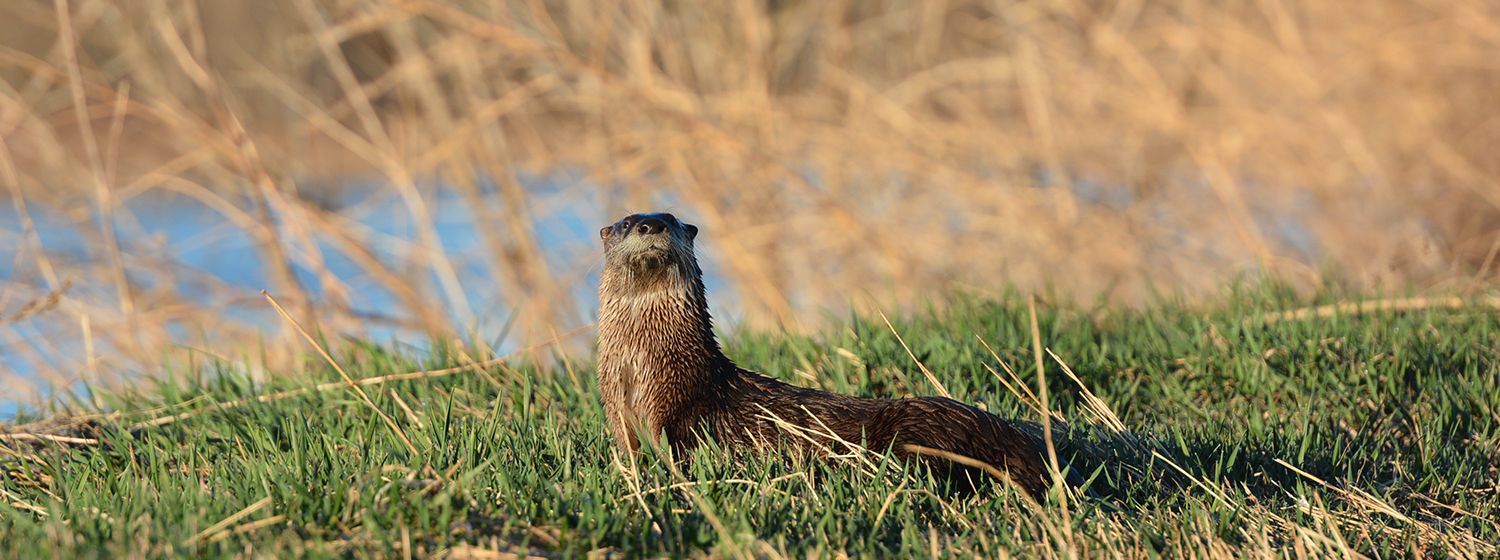The central Platte River Valley is home to a diverse array of plants, animals, insects, and more that all rely on the natural habitat shaped by the Platte River.
Historically each spring, like a farmer may till his crop fields, the Platte’s icy waters rise and scrape clean the sandbars creating roosting habitat for Sandhill Cranes, and nesting habitat for Piping Plovers and Least Terns. The landscape of the Platte and surrounding lands are habitats, or places to make a home and find food, for many different forms of life. Crane Trust researchers have been studying these unique creatures since the late 1970s and have discovered and documented over 500 plant species, 271 bird species, over 100 species of insects, 76 fish species (many of which are no longer present) and numerous mussels in the Platte River, sandpits, and sloughs. There are also many species of mammals and reptiles present, including our reintroduced bison, and some species that have disappeared from the prairies here like the black-tailed prairie dog. Many species that have been documented since the 1940s in this region are no longer seen on Platte River Prairies or the Crane Trust. Where possible, we hope to reintroduce species that have gone missing, and prevent the loss of more prairie diversity. In order to accomplish these goals we must monitor various forms of life to detect changes, but also do inventories of our plants, insects, and animals to truly understand what is here. Despite decades of effort in this area there are likely many more to discover, especially within the insect community. There are likely several species of flies, bees, ants, and others that are not yet documented as existing at the Trust.
Video Credit: Platte Basin Time-lapse Project
The insect community is usually the most diverse group of species in a prairie. There are many generalist insects that can utilize a variety of plants, but there are more that specialize, or use a particular plant for feeding, or to host their offspring. For example, there are species of fly that only lay their eggs in a few species of plants, then certain wasps, called parasitic wasps, lay their eggs in the larva of only a few species of specialist flies once the eggs have been laid on or in that plant. There is another parasite that can play a role in this dynamic however; there are wasps that parasitize the parasitic wasps that attack flies. Just within this ecological relationship, we could support hundreds of species of flies, and parasitic wasps, considering the 500 plant plus plant species present on the Crane Trust. However, most people will look at these insects and be unable to tell the difference, as often their speciation (where one species becomes two) is detectable only with genetic material as opposed to visible physical traits we can use to tell them apart.
Unlike many insects, most of our birds are readily identifiable, and due to migration patterns, constantly changing throughout the year which makes the Crane Trust, and central Nebraska, a wonderful location to watch birds. Nebraska is located in the heart of the central flyway, one of the largest and most important migratory flyways for waterbirds (ducks, geese, cranes, shorebirds). An estimated 10 million individual waterbirds migrate through the rainwater basin and the Central Platte each spring to reach the prime nesting areas as far north as the Arctic Circle. Birds like the Whooping Crane and the Buff-breasted Sandpiper have narrow migration corridors that usually span less than 100 miles of the central Platte River. Rare birds that regularly visit and the huge concentration of Sandhill Cranes each spring, has led to the Crane Trust being considered a globally important bird area. This region has been incredibly important for conservation as both a stopover location and breeding area for many key bird species. Since 1978 the Crane Trust has worked to protect migratory birds, and the designation as a globally important bird area reflects the efforts of all the Crane Trust employees past and present to acquire, protect, research and manage lands that are vital for at-risk bird species.
If you’d like to see specific lists of the species on the Crane Trust please get in contact with our research team which keeps extensive records on species presence (or absence) throughout time. Here are some interesting species that are present in the Trust prairies and waterways: 13 species of rodent (Rodentia) including meadow voles (Microtus pennsylvanicus) and North American beavers (Castor canadensis), 4 species of shrews and moles (Soricomorpha) including least shrews (Cryptotis parva), 13 species of mesocarnivore across various taxa including American badger (Taxidea taxus), long-tailed weasel (Mustela frenata), and coyote (Canis latrans), at least six species of bats (Chiroptera) including the eastern red bat (Lasiurus borealis) and the evening bat (Nycticeius humeralis), 11 species of reptiles including skinks (Plestiodon spp.), six-lined racerunner (Aspidoscelis sexlineata), smooth green snake (Liochlorophis vernalis), redbelly snake (Storeria occipitomaculata), spiny softshell turtle (Apalone spinifera), and at least seven species of amphibians including Boreal chorus frog (Pseudacris maculata), and Cope’s gray treefrog (Hyla chrysoscelis). We also have a suite of bird species that are in need of priority conservation described in our species profiles. If you’re more interested in our plants you can check out the wet meadows and tallgrass prairie habitat description.
KC King and Andrew J. Caven

